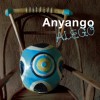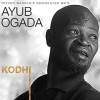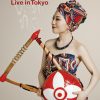 1.Tito Omondi – “J Nayau” 02:33
1.Tito Omondi – “J Nayau” 02:33
2.Nyawaga Mgele – “Onyiego Obara” 02:30
3.Ogola Opot – “Onyango Wasera” 02:40
4.Captain Oluoch – “Aduor” 02:56
5.Oloo – “Adika” 03:02
6.Opondo Mugoye – “Odhiambo Otieno” 02:48
7.Okelo Mugubi – “Ohala” 03:02
8.Oluoch Ngesa – “Obiro Olenda” 02:35
9.Tito Omondi – “Mulonga” 02:41
10.Nyawaga Mgele – “Peter Okola” 02:46
11.Ogola Opot – “Ginaa” 02:44
12.Captain Oluoch – “Obora” 02:38
13.Oloo – “Odeng” 03:07
14.Opondo Mugoye – “Owiti Otende” 02:49
15.Oluoch Ngesa – “Ajuang Osoddh” 02:40
16.Okelo Mugubi – “Ondoro” 02:57
The nyatiti is the eight stringed lyre of the Luo people of Western Kenya and is the best known traditional music in Kenya. This collection of restored and remastered recordings from the early and mid 20th century mark the first time that nyatiti music has been documented and made widely available to a worldwide audience.
Nyatiti music’s infectious and hypnotic sounds are unforgettable. The driving beat of the nyatiti rings of far off styles of Western dance and techno music. Nyatiti players are highly respected performers in both rural and urban Kenya are called to show up at weddings, funerals and drinking halls and sing songs in tribute, in remembrance and for people to drink and dance to. Nyatiti music can still be heard to this day all over Kenya, but these recordings represent the unique sound of the first half of the 20th century, and the last visages of the sounds that existed for millennia previous before the music would change to adapt to a changing world.
The record features classic players such as Ogola Opot, who would go on to define the Nyatiti sound for the genre’s popular resurgence in the 1970s and 80s. Opot was considered the grandfather of the sound that most Kenyans would associate with nyatiti music. Captain Oluoch, Opondo Mugoye and Okelo Mugubit were all famous players who were asked at some point to sit down and record for many of the fledgling record labels of the time.
Most of these recordings were made by British and Indian entrepreneurs, who sold 78 rpm records to foreign and domestic record buyers. These records were in part intended to document what was seen as an exotic and possibly dying music in colonial Kenya but enjoyed by Afro-Kenyans who presumably listened to these records at parties or through radio. Unfortunately, not much is known about the origin of these records or who bought them. The scant information included on the records make tracing the roots of this music difficult.
Based on accounts of records made in the 1970s during the 45rpm record boom in Kenya, we can speculate that the recording process was somewhat unnatural for these players. Nyatiti music, like many other musical traditions worldwide, includes long expositions that last as long as an audience will have them. The 3 minute format of the 78 was likely quite strange for some of these players, who might not have even gotten started with an audience until the 10 or 20 minute mark.
The photograph on the cover features an unidentified nyatiti player from 1936 playing in a traditional manner. He is seated on a small stool, close to the ground, playing and singing with his foot percussion and wearing a traditional had dress that is still associated with nyatiti music today. While the instrument has evolved since this picture was taken (it became smaller and higher in pitch in response to the introduction of guitars), the sounds you hear on this collection form the basis of the nyatiti music that became popularized in the 1970s and ’80s.
These recordings and the subsequent remastering process capture and bring new life to the rhythmic and trance like sound of the instrument. We are extremely proud to be able to present this first collection of exclusively nyatiti recordings to the public.
〜メーカーインフォより

 Anyango アニャンゴ / ALEGO 〜ニャティティの故郷〜
Anyango アニャンゴ / ALEGO 〜ニャティティの故郷〜 AYUB OGADA / KODHI
AYUB OGADA / KODHI ANYANGO / LIVE IN TOKYO
ANYANGO / LIVE IN TOKYO ANYAMGO / SAVANNA
ANYAMGO / SAVANNA